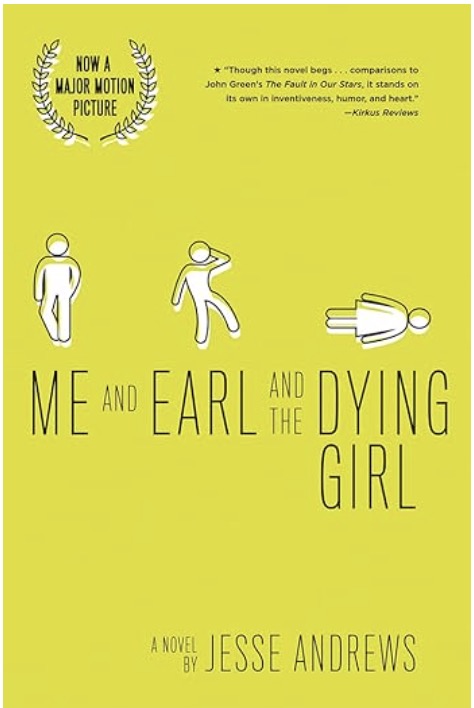Massachusetts Financial Expert is a 12th Grader: SIFMA Foundation’s InvestWrite Competition Announces a Massachusetts State High School Winner
Wayland, MA, February 6, 2012– It’s official! Kenya Heard, a 12th grade student at Wayland High School, in Wayland, MA, is a Massachusetts first place winner of the SIFMA Foundation’s InvestWrite® student essay competition, sponsored by the SIFMA Foundation and SIFMA member firms. Heard claims top prize for the high school division of the Fall 2011 Massachusetts competition.
As a culminating activity for the country’s 600,000 annual Stock Market Game™ participants, InvestWrite® challenges 4th-12th graders to analyze an investment scenario, think critically and write a long-term financial plan. Students address real-world economic factors and trends, better preparing for their own financial futures. Kenya Heard is one of 20,000 students each year across the nation who take the InvestWrite challenge.
In her essay, Heard was asked to discuss the five most important items to research before purchasing a stock, bond, or mutual fund. She chose the company CVS and examined its dividend status, price-to-earnings ratio, the company’s competitive superiority, market capitalization and institutional ownership. Based on her research, Kenya would invest 15% of her portfolio in CVS as her share would be large enough that if it grew she would increase her profit, but small enough so she could diversify her portfolio with other stocks, bonds, or mutual funds to reduce risk.
The Fall 2011 winning InvestWrite essay composed by Heard was chosen through rigorous judging by thousands of teachers and industry professionals who evaluate students’ analysis of asset allocation, the investment potential of various publicly traded stocks, their overall understanding of the stock market, and the manner in which they express their investment ideas in essay form.
“Year after year, thousands of volunteer judges are astounded by InvestWrite students’ ability to effectively plan for long-term financial goals such as saving for college, buying a first home, and even retirement” said Melanie Mortimer, Executive Director of the SIFMA Foundation. “It proves the adage ‘it’s never too early to start’ and inspires us to do all we can at the SIFMA Foundation to equip millions of students like Kenya with personal financial skills for lifelong success.”
The SIFMA Foundation’s InvestWrite competition bridges classroom learning in mathematics, social studies, language arts, business and economics, with the practical research and knowledge required for long-term personal financial planning. Students are, in fact, building on what they have learned through their participation in The Stock Market Game, which has reached more than 13 million students since its inception in 1977.
The need for early adoption of financial literacy programs was recently endorsed by Education Secretary Arne Duncan when he addressed the President’s Advisory Council on Financial Capability. “I think the challenge we face now is that we don't have a financially literate population," he said, attributing the shortfall in financial understanding to the absence of systemic instruction on the subject in schools, as well as at home and in the workplace. "As important as reading and math and social studies and science [are], I think today more than ever financial literacy has to be part of that," he said.
An independent study by Learning Point Associates found that students who participated in the Stock Market Game scored significantly higher on mathematics and financial literacy tests than their peers who did not participate. They also found that teachers who taught SMG reported the program motivated them to better plan for their future and to engage in financial planning, research, and use of investment products and services. The Stock Market Game has been named the only program that successfully increased scores on the Jumpstart Coalition’s test of high school students’ financial literacy.
James Page, Kenya’s teacher, is a veteran business educator with 11 years teaching experience, nine in Wayland Public Schools. Business courses in Wayland High School include Investing & the Creative Economy, Entrepreneurship & Business Management, and Business Law. This is Wayland High School’s sixth consecutive first place win in the Massachusetts state InvestWrite competition.
Kenya Heard will be awarded her state InvestWrite prizes during a surprise presentation in front of her peers on Monday, February 6, 2012, at Wayland High School in Wayland, MA.
Text of Kenya Heard’s Winning Essay:
With time on my side I am able to make riskier investments considering long-term market trends. However, time is not the only thing to consider when deciding to invest. The five most important things to consider when making a long-term stock investment are the dividend status, the price-to-earnings ratio and the forward price-to-earnings ratio, the company’s competitive superiority, market capitalization, and institutional ownership. I have decided to invest in CVS Caremark Corporation as a result of researching the above criteria.
One important investment strategy is to invest in companies that have historically given dividends. If the stock price goes down, I can still count on a 1.42% return from CVS in dividends. And CVS has consistently distributed them since 1987. Not many pharmacy/retail stores offer dividends. Walgreens gives a 2.79% dividend, PetMed Express gives a 5.30% dividend, and Rite Aid doesn’t distribute them. CVS’s dividend is lower than others in the industry; however, it is still positive and there are other reasons why CVS is a wiser investment.
Two other key stock characteristics to consider before investing are the price-to-earnings ratio and the forward price-to-earnings ratio. CVS has a current P/E of 15.35 and a FP/E of 11.99; this indicates that the earnings are projected to increase next year. CVS is valued for what it is worth because it’s P/E is close to 15.5 which is the market’s historical average. It is important to compare the P/E value to others in the same industry. The average ratio of the companies in the industry is 15.26, so CVS has an average P/E.
Another important criterion I research when investing is whether the company and its resources are better than its competition’s. One advantage CVS has over its largest competitor, Walgreens, is its rewards card. Walgreens has a similar card; however, it is only offered in three cities. CVS conveniently accepts and distributes their ExtraCare card at every one of its locations. It was also the, “first national pharmacy retailer to launch a loyalty card program.”(1). CVS has 7,100 stores in the U.S. and Walgreens has 7,697; however, CVS’s revenue for the fiscal year of 2010 was $96,413 million while Walgreens earned $67,420 million (2). Based on revenues, profits, earnings per share, total return to investors, and number of employees, CVS ranks number one in the Food and Drug Industry on the Fortune 500 list. Walgreens trails in third place (3). CVS is the largest pharmacy provider chain in the U.S. and customers can fill prescriptions at any one of their locations. Walgreens recently sold and closed all of their pharmacies in July 2011 because they couldn’t compete with CVS (4). CVS is competitively superior to Walgreens because of its ExtraCare card, pharmacy convenience, and revenue which was almost $20,000 million higher than Walgreens’ in 2010.
Two other criteria I research when investing are the company’s market capitalization and the institutional ownership. Market cap is important, indicating the company’s stability and growth potential. CVS is a large cap company with a market cap of $50.7 billion. While growth may be limited, compared to small or mid cap companies; this stock offers stability. Another important technical piece of information is the institutional ownership; 90% of CVS is institutionally owned. If institutions are investing millions of dollars in a company they expect their money to grow, so using their judgement you can expect yours to grow as well.
In the end, there is no way to know exactly which companies will grow at the highest rate. The most important criteria to examine during research are the dividend status, the price-to-earnings ratio and the forward price-to-earnings ratio, the company’s competitive superiority, market capitalization, and institutional ownership. I would invest 15% of my portfolio in CVS. My share would be large enough so if it grows I would make a substantial amount of money, but small enough so that I can diversify my portfolio with other stocks, bonds, or mutual funds to reduce risk.
Footnotes
(1)"CVS Caremark – About CVS." Internet Archive: Wayback Machine. Web. 15 Nov. 2011.
(2) "Fortune 500 2011: Top 500 American Companies – CVS Caremark – CVS – FORTUNE on CNNMoney.com." CNNMoney – Business, Financial and Personal Finance News. Web. 15 Nov. 2011.
(3)"Fortune 500 2011: Industry: Food and Drug Stores." CNNMoney – Business, Financial and Personal Finance News. Web. 15 Nov. 2011.
(4)"CVS vs. Walgreens: Benefits Biz Trash or Treasure? – TheStreet." Stock Market Today – Financial News, Quotes and Analysis – TheStreet. 22 Mar. 2011. Web. 15 Nov. 2011.
Works Cited
"CVS Caremark – About CVS." Internet Archive: Wayback Machine. Web. 15 Nov. 2011.
"CVS vs. Walgreens: Benefits Biz Trash or Treasure? – TheStreet." Stock Market Today – Financial News, Quotes and Analysis – TheStreet. 22 Mar. 2011. Web. 15 Nov. 2011.
"ExtraCare Rewards Program: Details: Frequently AskedQuestions and More from CVS Pharmacy." Web. 15 Nov. 2011. .
"Fortune 500 2011: Industry: Food and Drug Stores." CNNMoney – Business, Financial and Personal Finance News. Web. 15 Nov. 2011. .
"Fortune 500 2011: Top 500 American Companies – CVS Caremark – CVS – FORTUNE on CNNMoney.com." CNNMoney – Business, Financial and Personal Finance News. Web. 15 Nov. 2011. .
"Historical Stock Returns, Stocks/Shares/Equities Return, Performance, Data, Bond, Bonds, Dow, Nasdaq, S&P, Standard & Poors, NYSE, FTSE, Nikkei, Historic, ISEQ Irish Index, Gold Price/Market, 10, 20, 50, 100 Year : from Finfacts Ireland." IRELAND BUSINESS: FINFACTS IRISH FINANCE & BUSINESS PORTAL – Mortgage Ireland, Protection, Life Insurance, Financial Services, Investment, Loans, Irish Jobs Ireland, Dublin Mortgages, Cork, Limerick, Galway, Share, Stock Prices,. Web. 15 Nov. 2011. .
MarketWatch – Stock Market Quotes, Business News, Financial News. Web. 15 Nov. 2011. .
Sydney, Ian Chua. "Google Finance: Stock Market Quotes, News, Currency Conversions & More." Google. Web. 15 Nov. 2011. .
"Walgreens Rewards – Benefits." Walgreens Rewards – Home. Web. 15 Nov. 2011. .
Web. 15 Nov. 2011. .
Yahoo! Finance – Business Finance, Stock Market, Quotes, News. Web. 15 Nov. 2011.










